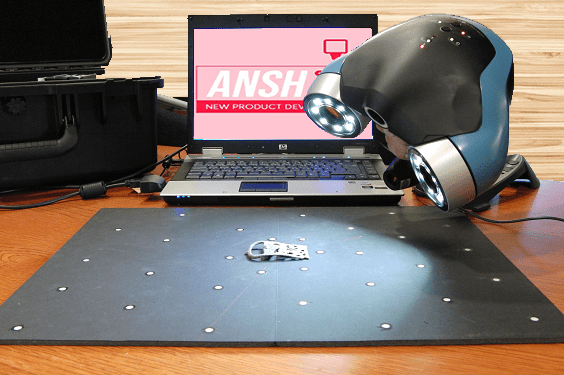
The Revolutionary Potential of 3D Printing: A Game-Changer in Manufacturing
In recent years, 3D printing has emerged as a groundbreaking technology with the potential to revolutionize various industries. Also known as additive manufacturing, 3D printing enables the creation of three-dimensional objects through layer-by-layer deposition of materials based on a digital model. This article delves into the remarkable world of 3D printing and explores its immense potential across different sectors.
Understanding the Basics of 3D Printing
To grasp the significance of 3D printing, it’s essential to understand its fundamental principles. At its core, this technology involves the use of computer-aided design (CAD) software to create a virtual blueprint or model of an object. This model is then sliced into multiple cross-sectional layers, which are subsequently printed by depositing material layer upon layer until the final object is produced.
Advantages of 3D Printing
Design Flexibility: With 3D printing, designers can explore intricate and complex shapes that were previously difficult or impossible to manufacture using traditional methods. This level of design freedom opens up endless possibilities for innovation and product development
Rapid Prototyping: One of the most significant advantages of 3D printing is its ability to speed up the prototyping process. By eliminating the need for expensive molds or tooling, manufacturers can quickly turn ideas into physical prototypes, reducing time-to-market and saving costs.
Customization and Personalization: Unlike mass production techniques, 3D printing allows for customization and personalization on a large scale. Each item can be tailored to specific requirements, catering to individual preferences and needs. This capability has transformative implications in fields such as healthcare, where personalized medical devices and prosthetics can greatly improve patient outcomes.
Waste Reduction: Traditional subtractive manufacturing processes often result in significant material waste. In contrast, 3D printing is an additive process, meaning that only the required amount of material is used to build the object. This efficiency leads to reduced material waste and contributes to a more sustainable manufacturing approach.
Applications of 3D Printing
Healthcare: 3D printing has already made notable strides in the healthcare industry. It enables the production of patient-specific implants, surgical models for pre-operative planning, and even functional organs for transplantation in the future. The ability to create custom medical solutions tailored to individual patients holds immense potential for improving healthcare outcomes.
Aerospace and Automotive Industries: Both aerospace and automotive sectors benefit from 3D printing’s lightweight, high-strength materials and intricate designs. It allows for the creation of complex parts with reduced weight, leading to fuel efficiency gains and improved performance. The technology also facilitates rapid prototyping during product development cycles.
Architecture and Construction: 3D printing has the potential to transform the construction industry by enabling the fabrication of intricate architectural structures with greater speed and precision. Large-scale 3D printers can construct entire buildings using specialized concrete mixtures, reducing labor costs and construction time while minimizing waste.
Education and Research: 3D printing is increasingly finding its way into educational institutions, offering students hands-on experience in design, engineering, and manufacturing. It also facilitates research in fields such as material science and bioengineering, driving innovation and knowledge advancement.
Challenges
While 3D printing has shown tremendous promise, it is not without its challenges. Some of the current limitations include
Material Limitations: Although there is a wide range of materials available for 3D printing, including plastics, metals, ceramics, and even biological materials, certain materials with specific properties are still difficult to print effectively. Researchers are continuously exploring new materials and refining printing techniques to expand the range of printable materials.
Speed and Scaling: 3D printing can be time-consuming, especially when manufacturing complex objects with fine details. Scaling up production can also pose challenges, as the speed of printing multiple objects simultaneously needs improvement. However, advancements in hardware and software are addressing these issues, paving the way for faster printing speeds and increased scalability.
Quality Control: Ensuring consistent quality across multiple prints can be a challenge in 3D printing. Factors such as layer adhesion, dimensional accuracy, and surface finish require meticulous calibration and monitoring. Ongoing research focuses on improving quality control measures to achieve greater precision and reliability in printed objects.
Future Developments
Looking ahead, several exciting developments are on the horizon for 3D printing:
Multi-Material and Multi-Functional Printing: Innovations in multi-material 3D printing will enable the creation of complex objects with varying material properties within a single print. This advancement opens up possibilities for creating functional parts with integrated electronics, sensors, and even living cells.
4D Printing: Building upon 3D printing, 4D printing involves the use of responsive materials that can change shape or functionality over time. These materials can be programmed to respond to external stimuli, such as temperature or moisture, leading to the creation of self-assembling structures or objects that can adapt to their environment.
Industrial-Scale 3D Printing: As the technology matures, we can expect to see larger and more capable industrial-scale 3D printers. This will enable the production of complex, large-scale objects such as aircraft components or architectural structures with greater efficiency and cost-effectiveness.
The future of 3D printing holds immense potential for transforming various industries, from healthcare and aerospace to architecture and education. Despite some remaining challenges, ongoing research and advancements in materials, speed, and quality control are steadily improving the capabilities of this technology.
As 3D printing continues to evolve, we can anticipate a broader range of materials, increased customization options, and enhanced functionality. These developments have the potential to revolutionize manufacturing processes, drive innovation, and create new opportunities across multiple sectors. With its ability to foster creativity, reduce waste, and enable rapid prototyping, 3D printing is undoubtedly a game-changer that will shape the way we design, produce, and interact with physical objects in the years to come.





